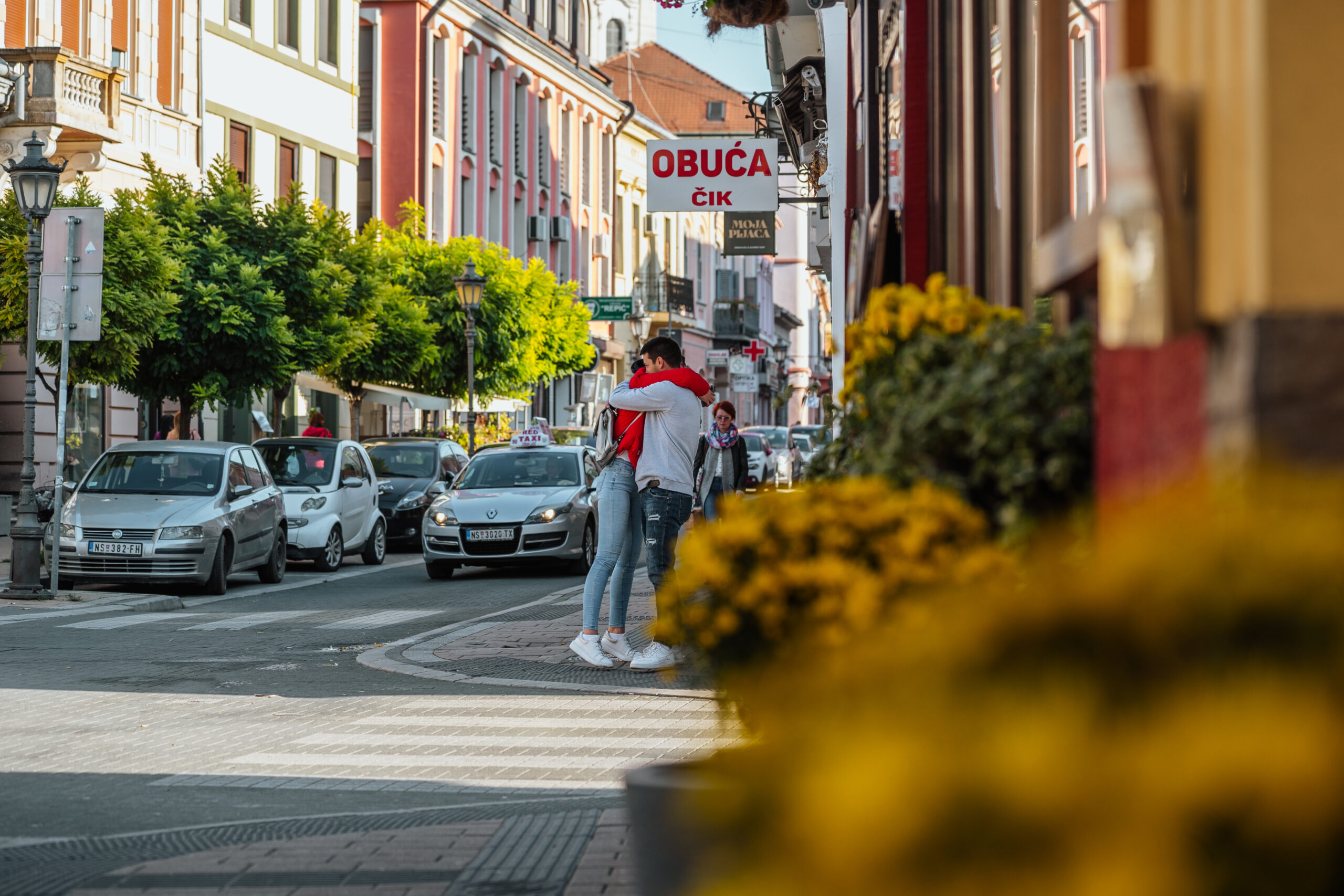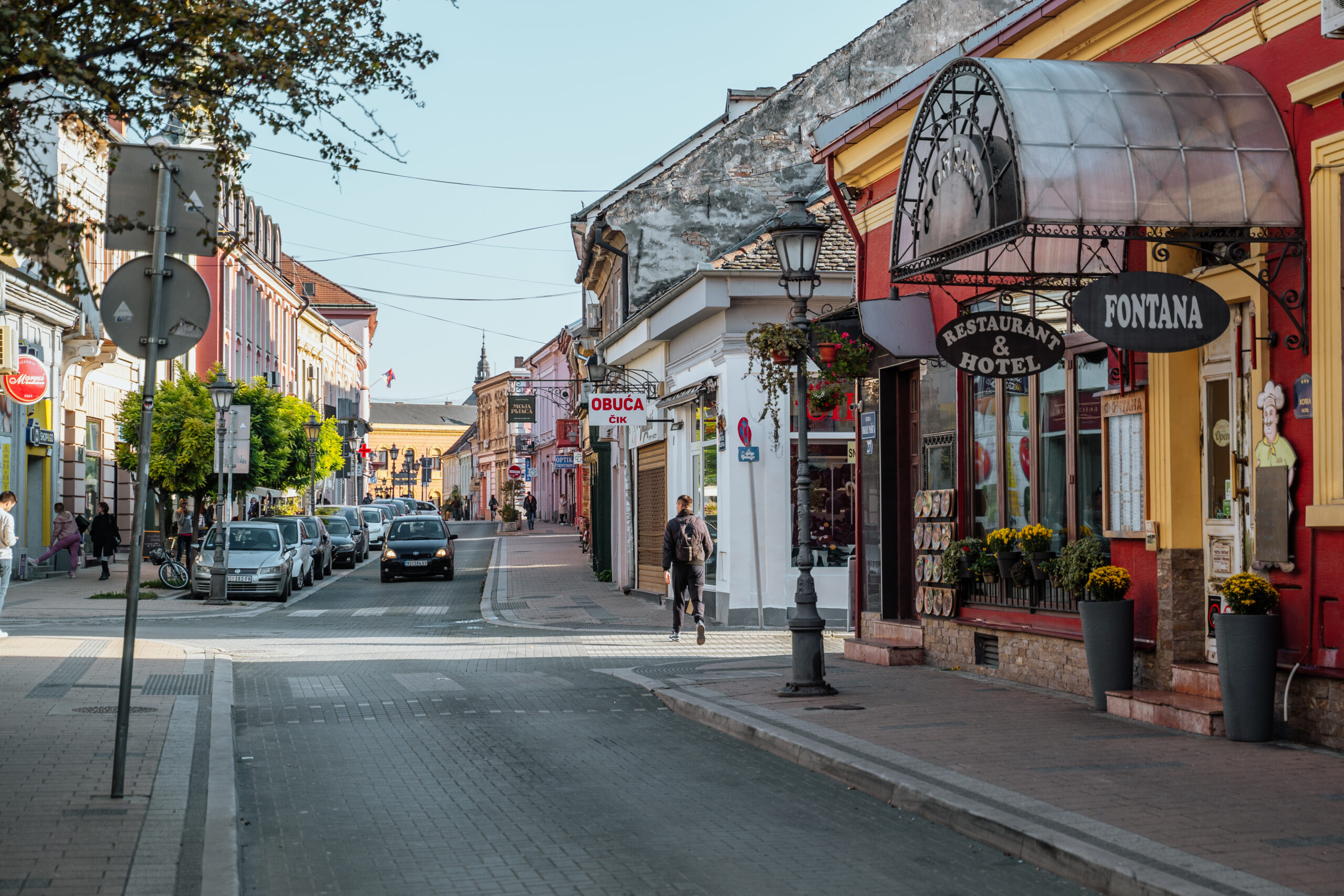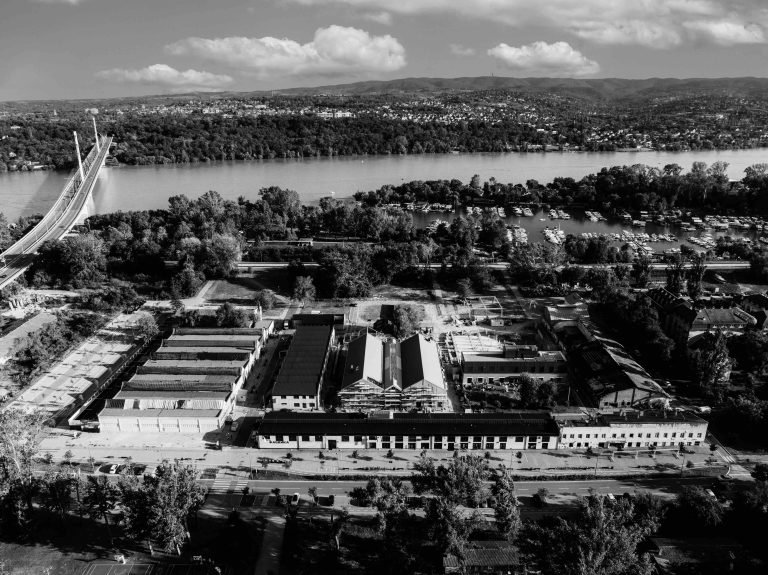Anyone who is often in the downtown of Novi Sad, either for work or for pleasure, certainly often passes through Pašićeva Street. It is located in the centre of the city, when you turn left from Zmaj Jovina Street near Bishop’s Palace. Many claim that Pašićeva Street is the most beautiful in the city – although the impression is subjective and difficult to measure, what we know for sure is that it is one of the oldest streets in our city.
It was mentioned for the first time on a map in 1745, on the city plan where it was marked as Velika Čaršija, as one of only nine names (two of which are in Serbian, one in Hungarian, and even six in German). The map – which is the oldest plan of the city of Novi Sad – shows that the street was an important route leading to Temerin, and further to Szeged, Budapest and Vienna. Novi Sad was actually created at the intersection of this road, the road to Petrovaradin and Belgrade, and the road to Futog and Bač. The roads crossed near the present-day Bishop’s Palace – the then Cathedral Church, where at the end of the 17th century the seat of the Diocese of Bačka was moved from Szeged. Next to the church, a Serbian Elementary School was built in 1703, and in 1731, a Latin School of Bishop Visarion.
A Tram through Pašićeva Street
‘Velika Čaršija’ changed its name several times, and the one that lasted the longest was Čurčijska Street in three languages – Serbian, Hungarian (Szucs utca) and German (Kürschnergasse). All three translations meant the same thing: the street got its name from the fur craftsmen – or ćurčija – who had their shops in large numbers down the street. Ćurčijska Street was full of shops with various fur ‘fashion accessories’ that served to warm you up or show off. A fur craft was passed from father to son until after World War I when they started to do something else.
It was in 1918 that the street changed its name to Nikole Pašića Street, which it bore until World War II. In those days you could ride it on a tram. Namely, Line 1 passed through Pašićeva Street from 1911 to 1958, which went from the spa and hospital along Futoška Street, Jevrejska Street, Zmaj Jovina Street, Nikole Pašića Street, and Temerinska Street to the canal.

The Orthodox Cathedral Church of Saint George
When you enter Pašićeva Street from Zmaj Jovina Street, the Cathedral Church of St. George, or simply the Cathedral Church, awaits you. The church was first a smaller temple that was mentioned as early as 1720, and was renovated several times during the 19th and 20th century. In many ways, the church is both important for the city and for the Orthodox believers: eight bishops of Bač are buried in it, the Epiphany cross made of pink marble, the oldest monument of the city of Novi Sad, is kept in its gate, and all the icons on the iconostasis were painted by Paja Jovanović. The cross was once located at the corner of Zmaj Jovina and Miletićeva streets, but was moved in front of the Bishop’s Palace at the beginning of the 20th century due to the installation of tram tracks. After World War I, the authorities wished to demolish the cross, while the church opposed it. The dispute went all the way to the Supreme Court, which ordered that the cross be removed and moved to the port of the Cathedral. It is not known exactly how old the cross is, because the information about it was destroyed in the bombing of Novi Sad in 1849, when it itself was damaged. However, it is known for sure that it is on the city plan from 1745!

Nikolajevska Church
Pašićeva Street begins with one church and ends with another one: it is the Church of the Transfer of the Relics of St. Nicholas, or Nikolajevska Church, for some time known as Nedeljko’s Church after the ktetor Nedeljko Bogdanović, who built it in the first half of the 18th century. The exact archive data of the church up to the middle of the 19th century, are also burned in the bombing, when the church was also damaged and almost demolished. Its restoration was helped by the benefactors of Novi Sad, Jovan and Marija Trandafil, Jovan Polit and Ananije Dera. However, money was not raised for interior renovation, so the renovated church served as a military warehouse for a long time. It was not until ten years later that the interior of the church was restored and returned to its original purpose, only to be destroyed again in a bombing less than a century later – on 6 April, 1941. Jovan and Marija Trandafil were buried there, while the children of Albert Einstein and Mileva Marić were baptized there.
Platoneum
Platoneum – the endowment of Bishop Platon Atanacković awaits you when you head down Pašićeva Street, after the Cathedral. Bishop Platon bought the house and then donated it to the Fund of the Serbian Grammar School in order to form the First Academy in it – however, the intention was never realized. But the house did not lack cultural and educational contents. Namely, the bishop gave the house to Matica Srpska after the institution was moved from Pest in 1864. At one time, there was a Serbian Reading Room on the first floor, while from 1935 it housed the Male Gymnasium, the Hungarian Gymnasium, the Trade School, the Higher Pedagogical School, the University of Novi Sad, and from 1978 the Platoneum was permanently assigned to the Vojvodina Academy of Sciences – today it is a branch of the Academy of Sciences in Novi Sad.
Matica srpska
The building of Matica Srpska – the oldest Serbian literary, cultural and scientific institution – is located at the end of Pašićeva Street, on the site of a Turkish inn that was completely destroyed in the bombing in 1849. The building is an endowment of the benefactor Marija Trandafil to the city. Marija Trandafil, born Popović, was married to a rich Greek fur trader, Jovan Trandafil. As the story goes, the Trandafils experienced several family tragedies in the form of the death of children and other close family members, and the two of them donated a lot of money to charitable purposes, for the construction of churches and cultural institutions, and bequeathed their property – Marija to SOC and Matica Srpska. In Pašićeva Street, there is also the house of the Trandafils, popularly called the ‘House near the icon’, because the icon of the apostles Peter and Paul is placed on its façade.

Pašićeva Street through History
As we have already said, Pašićeva Street, originally known as Velka Čaršija, has several names in its identity card. Until 1918, it was known as Vel(i)ka čaršija, Čurčijska ulica, and Gabona utca; it bore the name of Nikola Pašić from 1918 to 1941, and during World War I it was called Jokai Mor utca. After the war, it was called Svetozara Markovića Street, and during the 1990s it was divided into two parts: from the Cathedral Church to the Grčkoškolska Street, it was called Pašićeva Street, and Svetozara Markovića Street further on. At the beginning of this century, its entire length was once again called Nikole Pašića Street – or Pašićeva Street – as we still know it today, after the politician, the Prime Minister of the Kingdom of Serbs and then the Kingdom of SHS.
Pašićeva Street Today
In Pašićeva Street, there were two famous places for going out in the eighties and nineties of the last century: the Atrium club and the wine cellar ‘Kod Večite Slavine’. Today, the Atrium is a hammam and spa centre, while the wine cellar still ‘holds on’, and is said to be one of the best places in town if you are a fan of wine and spritzers.
If the path takes you to the optician’s shop at number 15, you will be interested to hear that there used to be a ‘Šaran’ tavern, and before that a ‘Kod 12 Apostola’ tavern, painted with motifs of the Last Supper.
There are hotels ‘Veliki’ and ‘Fontana’ where you can try great cuisine from Vojvodina; as well as ‘Fish i Zeleniš’, a place where on warm days you will feel like you are somewhere at the sea. Today, you will not find fur shops here, but you will find numerous cafés and restaurants, pastry shops, bakeries and shops that a modern citizen of Novi Sad will need. However, look carefully at the façades the next time you find yourself in Pašićeva Street, and imagine – some of these houses and buildings were there long before you, and served their purpose several centuries ago.
Author: Tihana Smiljanić
Photography: Museum of Vojvodina, Jelena Ivanović









